Whenever we choose products that are Australian made and owned, we aren’t just making a personal choice. We’re supporting local jobs, strengthening the economic backbone of the country, reducing our carbon footprint, ensuring quality and safety, and encouraging innovation.
You’d be hard pressed to find a better example of all that in action than Shore Hire.
These days, the name is synonymous with premium, tailored shoring, propping and traffic management solutions. But since the very beginning, back when patriarch, Peter Geelan, was hand painting and renting out barricades, their ethos has always centered around customer-driven product development. So, as CEO, Ashley Lancaster points out, it has always made sense to maintain complete ownership of the end-to-end process.

“Keeping it all in-house wherever possible means we can rapidly innovate, and respond to feedback,” he explains. “That’s only possible thanks to our exceptional engineers and innovation team who close that loop by getting out there and listening to what the market, our customers, and our people are telling us.”
Having expanded into key locations along the eastern seaboard, walking their talk on ‘local’ means the Australian Made promise is baked into everything they do.
“Our customers need very high-quality products. But they also need us to have the capability to move quickly,” Ashley explains. “You just can’t do that with an overseas supply chain.”

And when they say they do the lot, the Shore Hire team aren’t joking. “We run the whole show, from manufacture right through to asset management, and even the delivery,” Ashley says. “The vast majority of production is done by our own tradesmen in our own facilities, and our in-house engineers do the quality checks. Yes, that’s about quality control but it’s also about speed. We’re not waiting months and months to get products up to standard. I mean, it can literally be just a matter of days between an idea and a prototype.”
With innovation at the core of Shore Hire’s commitment to local design and manufacturing, it’s no surprise their catalogue of product offerings expands year on year.

“When they first went into shoring, obviously the business had Peter Geelan’s 50-odd years of experience to draw upon. Then, as time went on, they looked internationally at all the shoring products on offer and set about creating world-class solutions that could stand up to Australian conditions,” Ashley shares. “Listening to our customers has always been a huge part of our product development strategy. We’re constantly using customer feedback to help tailor products to suit new and niche applications.”
That laser focus on customer experience – the Geelans call it delivering the “wow factor” – also underpins Shore Hire’s famously empowering workplace culture.
“That’s critical to our success.” Ashley says. “Every member of the team really is proud to be part of the Shore Hire family. And that comes from Luke and Peter being so approachable and hands-on at every level.”

As the business has grown to some 170 staff and expanded well beyond the Sydney HQ, the secret to scaling that culture has come down to great communication. “We’re rolling out new initiatives, like our Town Hall meetings, where the executive team will go around each brand and update everyone on what’s happening in the business, locally to them,” Ashley explains. “Because at the end of the day, it’s important to us that everybody knows they’re part of the solution.”
When you’ve got that strong culture, staff retention tends to look after itself. Which, Ashley says, has flow-on benefits. “We have people that were with us from the first day and many who were there in the very first or second year still working for us,” he shares. “That adds up to an incredible amount of expertise. And it also promotes consistency in our customer relationships and their experience of working with us.”

Ashley, himself part of the Geelans’ story since 2005, has a background you don’t often see in a CEO. “I started out as a diesel mechanic with Caterpillar,” he recalls. “I worked my way up through parts operations, branch manager, parts operations manager, and regional manager before joining Shorco – the Geelans’ previous venture. After 15 years there, I was General Manager for New South Wales before making the decision to rejoin Luke and Pete in the Shore Hire business. That was back in February 2019.”
In taking on the challenge of leading one of the Aussie construction industry’s shining stars, Ashley has found his operational background to be a real asset. “I’ve obviously had to work hard to study and acquire a lot of those other skills that are required of any CEO these days,” he shares. “But having that foundation has been very helpful in my everyday job. My knowledge of the equipment and operations isn’t just theoretical. I’ve done all those jobs myself.”

Ashley’s appointment to the role is reflective of Shore Hire’s approach to recruitment more generally. “When you have that amazing culture, you want to protect it. So, Luke prioritises cultural fit. In looking for a CEO, for him that was about leadership. Can this person keep people engaged and get everyone behind our vision for the company? Will they care enough about our customers?”
As a safety business, you could argue the most important aspect of Shore Hire’s focus on Australian Made is their local knowledge of, and ability to stay ahead of the curve on, worksite safety needs and regulations.
“What’s really important in hire, but particularly in shoring and propping, is that every product that leaves the gate must be 100% safe,” Ashley says. “If they’re not right, consequences can be dire – people can lose their lives. So, it’s very important that our products are not only well designed and constructed, but also well maintained and inspected after every hire.”

This is yet another way that Shore Hire having ownership of the whole process offers their customers that extra peace of mind. “If something’s in Melbourne, Adelaide, or Brisbane and needs repair, we’ll transport that product back to our central repair facility to ensure we’re maintaining equipment to the highest standard,” he explains. “Right now, it’s difficult to scale that quality of repair facility at a local level, so we’re continuing to invest heavily in our centralised facility, so we know everything’s spot on.”
With a growing team and a product range that reaches well beyond their initial shoring and propping offerings (even including some tech-based solutions), what does the future have in store for Shore Hire?

“We care about our people, our customers, and the wider community,” Ashley shares. “And serving them comes down to finding that sweet spot where quality craftsmanship meets innovation – that’s how we’ll continue to deliver that wow factor. You have to be ready to make decisions and get moving. Which also means not being afraid to fail. If you’re not failing, you’re not trying. That said we don’t fail too often.”
Spend enough time around the team, as we have, and you’re left with the overwhelming sense that at the heart of every project, in every piece of equipment they build, and in every job opportunity they create, Shore Hire proudly embodies the spirit of Australian ingenuity, resilience, and workmanship. They’re certainly doing their part to build a stronger tomorrow.



 Embracing Electromobility to Achieve Sustainable Construction
Embracing Electromobility to Achieve Sustainable Construction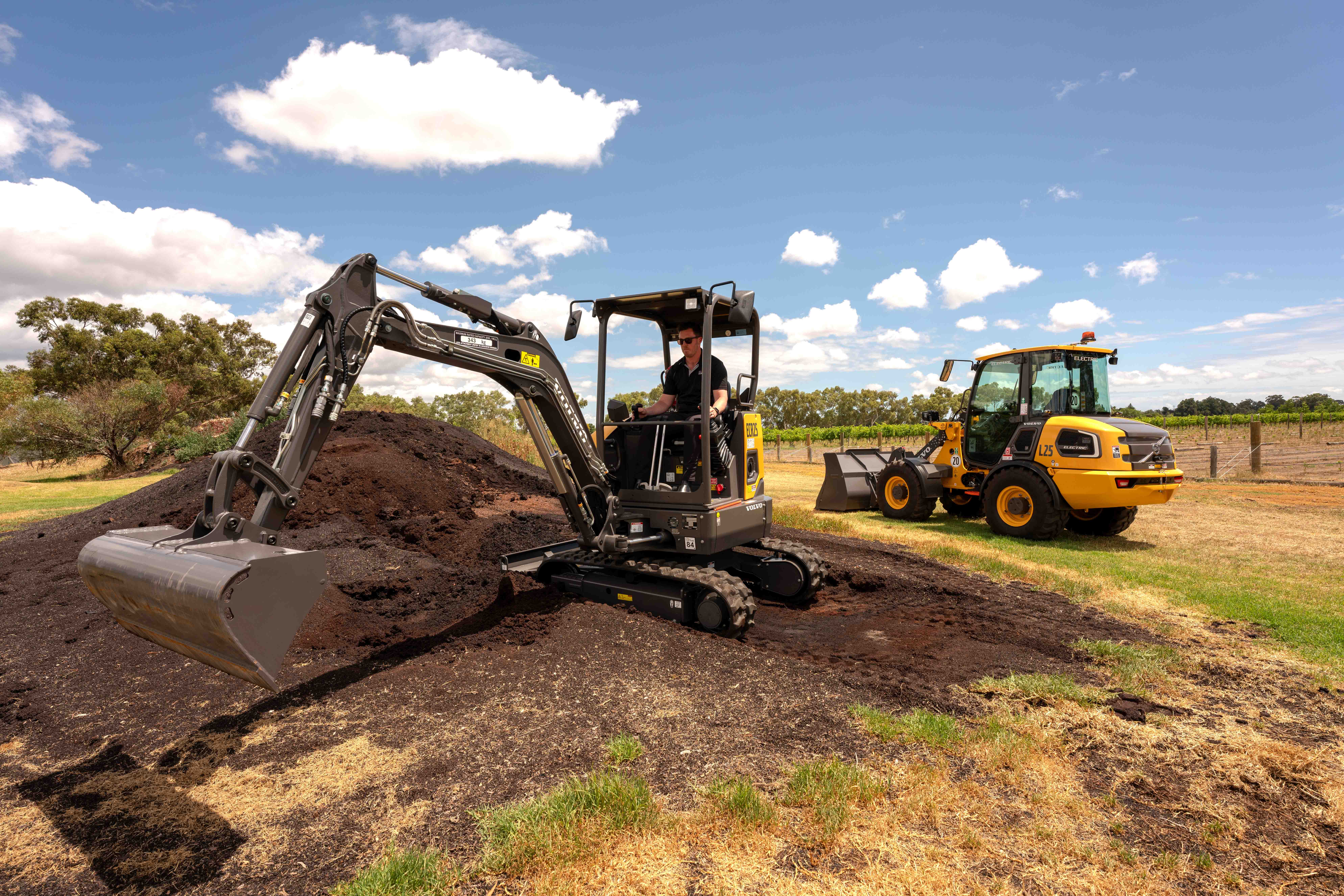 Compact Electric Machines
Compact Electric Machines Unleashing the Power of Electric Machines
Unleashing the Power of Electric Machines Accelerating Climate Action: Volvo CE’s Commitment to Sustainability
Accelerating Climate Action: Volvo CE’s Commitment to Sustainability “Being part of the transition from ICE (internal combustion engine) to what we see today is remarkable. When 1st I started my apprenticeship, this would not have been considered in my wildest dreams. Seeing what Volvo has been able to deliver with these Compact Construction Machines shows that it will be a bright future for our children and the dawn of a new chapter in Construction Equipment with Volvo” Hayden Grant National Product Manager | Volvo Construction Equipment
“Being part of the transition from ICE (internal combustion engine) to what we see today is remarkable. When 1st I started my apprenticeship, this would not have been considered in my wildest dreams. Seeing what Volvo has been able to deliver with these Compact Construction Machines shows that it will be a bright future for our children and the dawn of a new chapter in Construction Equipment with Volvo” Hayden Grant National Product Manager | Volvo Construction Equipment Charging Solutions for Seamless Operations
Charging Solutions for Seamless Operations The Future of Sustainable Construction
The Future of Sustainable Construction Through continuous innovation and a commitment to customer success, Volvo CE is pioneering electric solutions that deliver both environmental benefits and high performance. As the construction industry evolves, the integration of zero-emission machines will become increasingly vital in achieving sustainable construction practices.
Through continuous innovation and a commitment to customer success, Volvo CE is pioneering electric solutions that deliver both environmental benefits and high performance. As the construction industry evolves, the integration of zero-emission machines will become increasingly vital in achieving sustainable construction practices. For many years, CJD Equipment and Volvo CE have been supplying premium construction equipment tailored to the specific needs of Australia’s diverse industries. Their collaboration over thirty years has ensured the delivery of high productivity, fuel efficiency, and safety solutions, enabling machines to operate at peak performance.
For many years, CJD Equipment and Volvo CE have been supplying premium construction equipment tailored to the specific needs of Australia’s diverse industries. Their collaboration over thirty years has ensured the delivery of high productivity, fuel efficiency, and safety solutions, enabling machines to operate at peak performance. There are several very clever features that make the Boss Breakers such a no nonsense hulk of a hammer that won’t let you down including the Energy Regeneration Nitrogen Gas Cushion Chamber (ERNGCC) that absorbs the piston’s upward recoil and conducts energy recycling for the constant blow.
There are several very clever features that make the Boss Breakers such a no nonsense hulk of a hammer that won’t let you down including the Energy Regeneration Nitrogen Gas Cushion Chamber (ERNGCC) that absorbs the piston’s upward recoil and conducts energy recycling for the constant blow.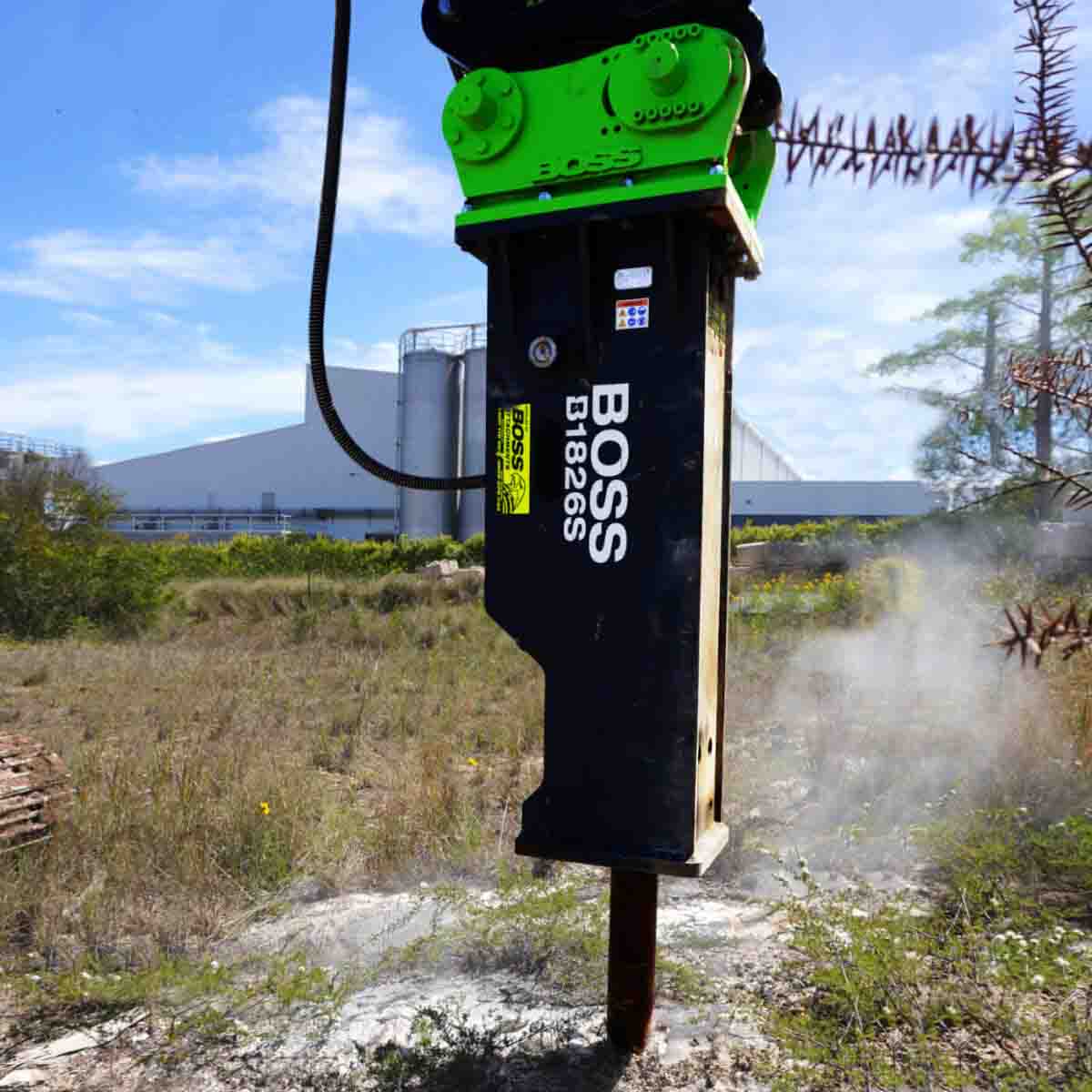 Employment of wear resistant plates between cylinder, front head and housing increases the overall product durability.
Employment of wear resistant plates between cylinder, front head and housing increases the overall product durability.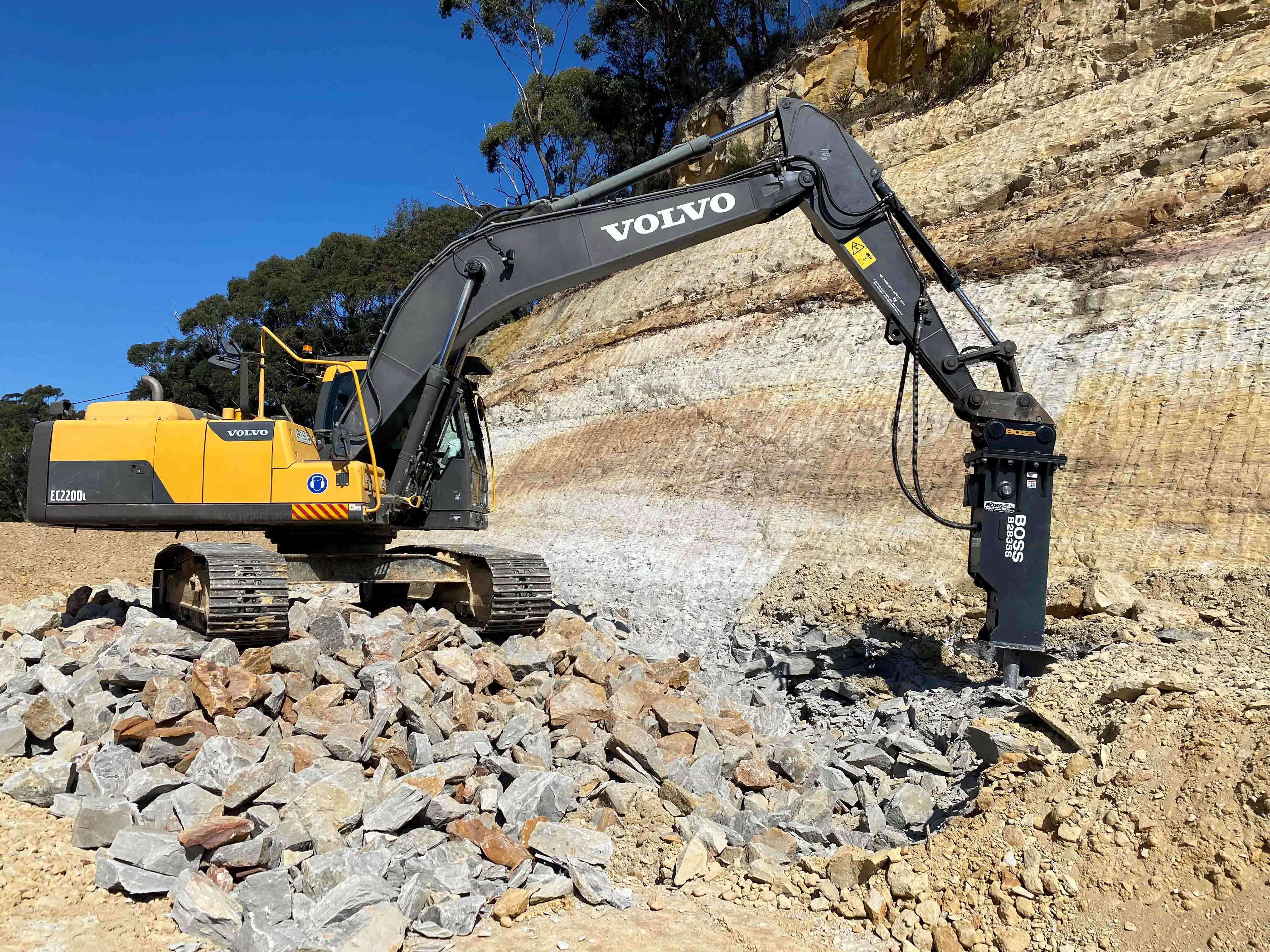 Super Anti Blank Firing (SABF) System SABF increases the lifespan of all components subject to wear and fatigue and reducing stress for the arm of the main carrier and the breaker.
Super Anti Blank Firing (SABF) System SABF increases the lifespan of all components subject to wear and fatigue and reducing stress for the arm of the main carrier and the breaker.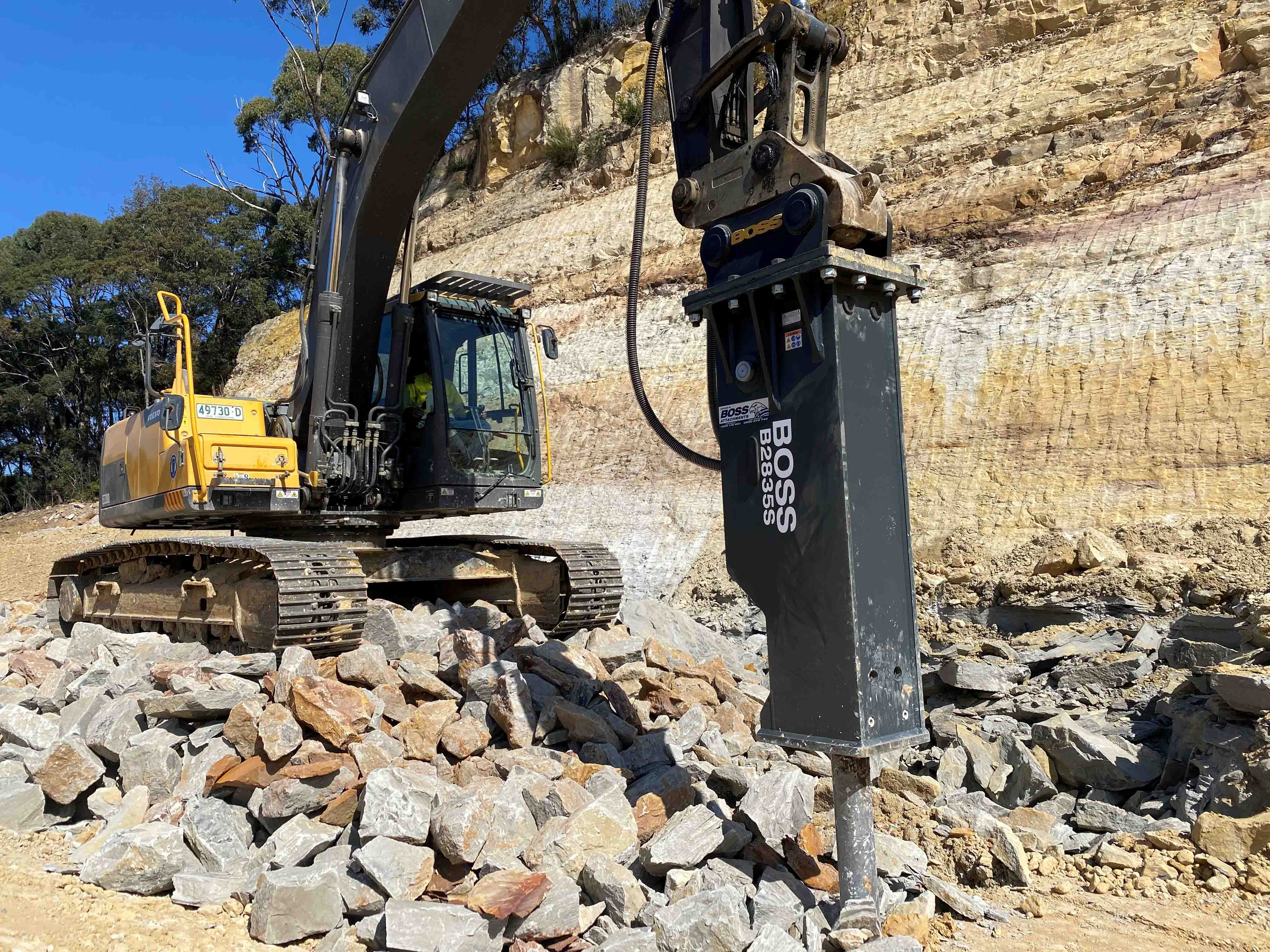 The operator can efficiently control the hammer operation even in poor visibility such as underwater.
The operator can efficiently control the hammer operation even in poor visibility such as underwater. If you would like more information on these impressive breakers or any of the Boss products visit
If you would like more information on these impressive breakers or any of the Boss products visit  When it comes to heavy-duty construction and road maintenance projects, having the right equipment is essential. A machine and attachment that have gained popularity with council and construction companies are the RT-135 and the Schibeci ST1000. While they serve different purposes, this machine and attachment can be used in tandem to achieve outstanding results in grinding and milling applications.
When it comes to heavy-duty construction and road maintenance projects, having the right equipment is essential. A machine and attachment that have gained popularity with council and construction companies are the RT-135 and the Schibeci ST1000. While they serve different purposes, this machine and attachment can be used in tandem to achieve outstanding results in grinding and milling applications.
 The Schibeci ST1000
The Schibeci ST1000 Combining the RT-135 with the ST1000 is a winning combination for grinding and milling projects. It provides the power, versatility, and manoeuvrability needed to navigate varied terrains and confined spaces, while the ST1000 brings the efficiency and precision required for milling and grinding applications.
Combining the RT-135 with the ST1000 is a winning combination for grinding and milling projects. It provides the power, versatility, and manoeuvrability needed to navigate varied terrains and confined spaces, while the ST1000 brings the efficiency and precision required for milling and grinding applications. Also recommended for use with an
Also recommended for use with an 



 With a 700-strong team of employees Hazell Bros enjoys a longstanding reputation for reliability in providing service solutions and the supply of quality products and materials.
With a 700-strong team of employees Hazell Bros enjoys a longstanding reputation for reliability in providing service solutions and the supply of quality products and materials. John talks us through the site conditions and where the Hidromek HMK500LCHD fits into their fleet.
John talks us through the site conditions and where the Hidromek HMK500LCHD fits into their fleet. John also mentions that they are about to start on the drilling and blasting of rock and will start loading out hard dolerite shortly. ‘It hasn’t been the easiest of work and it (the HMK500LCHD) has done a good job. We also have a HMK300LC here as well and have had no issues with that either’, said John. It is expected that the project will run until the end of summer next year.
John also mentions that they are about to start on the drilling and blasting of rock and will start loading out hard dolerite shortly. ‘It hasn’t been the easiest of work and it (the HMK500LCHD) has done a good job. We also have a HMK300LC here as well and have had no issues with that either’, said John. It is expected that the project will run until the end of summer next year. John explains some of the reasoning behind purchasing the Hidromek excavators. ‘It was around pricing and the specifications.’ Hazell Bros. are very thorough in their approach to buying new equipment, reviewing service manuals and ensuring all specs are in line with their business requirements. John continues ‘We took into consideration the pricing which was near $300,000 below some of the other options and then looked at the breakout horsepower and compared cycle times.’ As they had experience owning Hidromek excavators and recognised the HMK500LCHD would also meet their requirements, the excavator was ordered and delivered early 2023.
John explains some of the reasoning behind purchasing the Hidromek excavators. ‘It was around pricing and the specifications.’ Hazell Bros. are very thorough in their approach to buying new equipment, reviewing service manuals and ensuring all specs are in line with their business requirements. John continues ‘We took into consideration the pricing which was near $300,000 below some of the other options and then looked at the breakout horsepower and compared cycle times.’ As they had experience owning Hidromek excavators and recognised the HMK500LCHD would also meet their requirements, the excavator was ordered and delivered early 2023. Interestingly John said, ‘The cab design was not a factor in buying this machine, but certainly now the machine is here, it is. The operator has been in the industry a long time and is very impressed with the comfort of the machine. He would have sat in just about every brand out there and he definitely likes this one, so that is worth noting.’
Interestingly John said, ‘The cab design was not a factor in buying this machine, but certainly now the machine is here, it is. The operator has been in the industry a long time and is very impressed with the comfort of the machine. He would have sat in just about every brand out there and he definitely likes this one, so that is worth noting.’ The operators are also happy with the power as John states, ‘Rob, the operator is happy with the way it digs, happy with the power and it has been performing very well since it has been here.’ In regard to the maintenance of the machine John said ‘they really like the auto greaser, and servicing has been good, no complaints, actually we haven’t needed to do much work on it.’
The operators are also happy with the power as John states, ‘Rob, the operator is happy with the way it digs, happy with the power and it has been performing very well since it has been here.’ In regard to the maintenance of the machine John said ‘they really like the auto greaser, and servicing has been good, no complaints, actually we haven’t needed to do much work on it.’ When asked if he would recommend Hidromek, John didn’t hesitate, ‘Yes, I would recommend Hidromek, the operators like them and that makes a big difference. They find it very comfortable and easy to operate. Hidromek do what they said they would do and it is not down on power, with no breakdowns to speak of.’
When asked if he would recommend Hidromek, John didn’t hesitate, ‘Yes, I would recommend Hidromek, the operators like them and that makes a big difference. They find it very comfortable and easy to operate. Hidromek do what they said they would do and it is not down on power, with no breakdowns to speak of.’

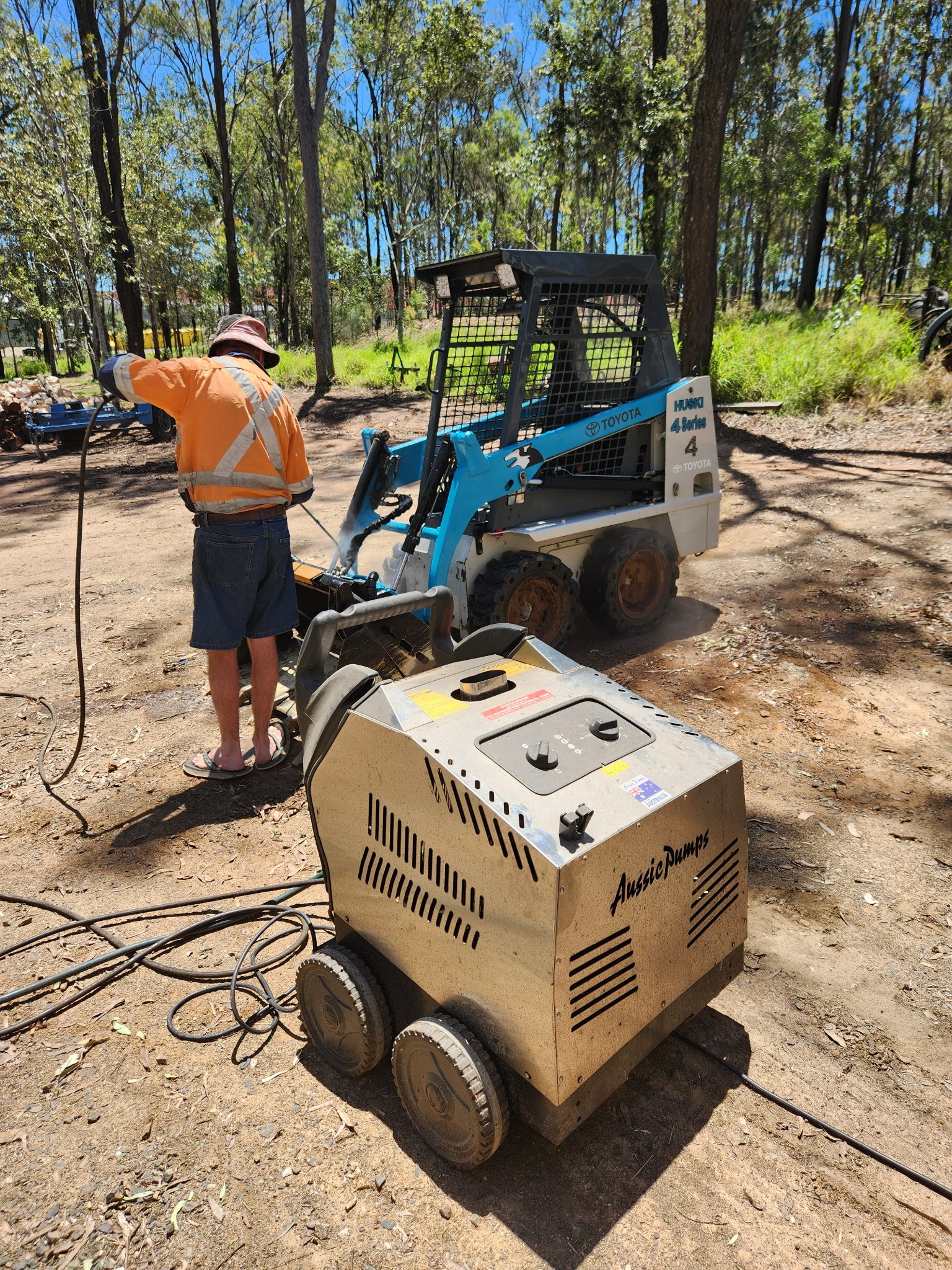 BIG PRESSURE TOO
BIG PRESSURE TOO
 WHAT ARE THE OTHER TYPES OF EXCAVATION SUPPORT METHODS?
WHAT ARE THE OTHER TYPES OF EXCAVATION SUPPORT METHODS? WHAT ARE LAUNCH AND RECEIVE PITS?
WHAT ARE LAUNCH AND RECEIVE PITS? HOW CAN YOU STAY SAFE WHEN SHORING?
HOW CAN YOU STAY SAFE WHEN SHORING?

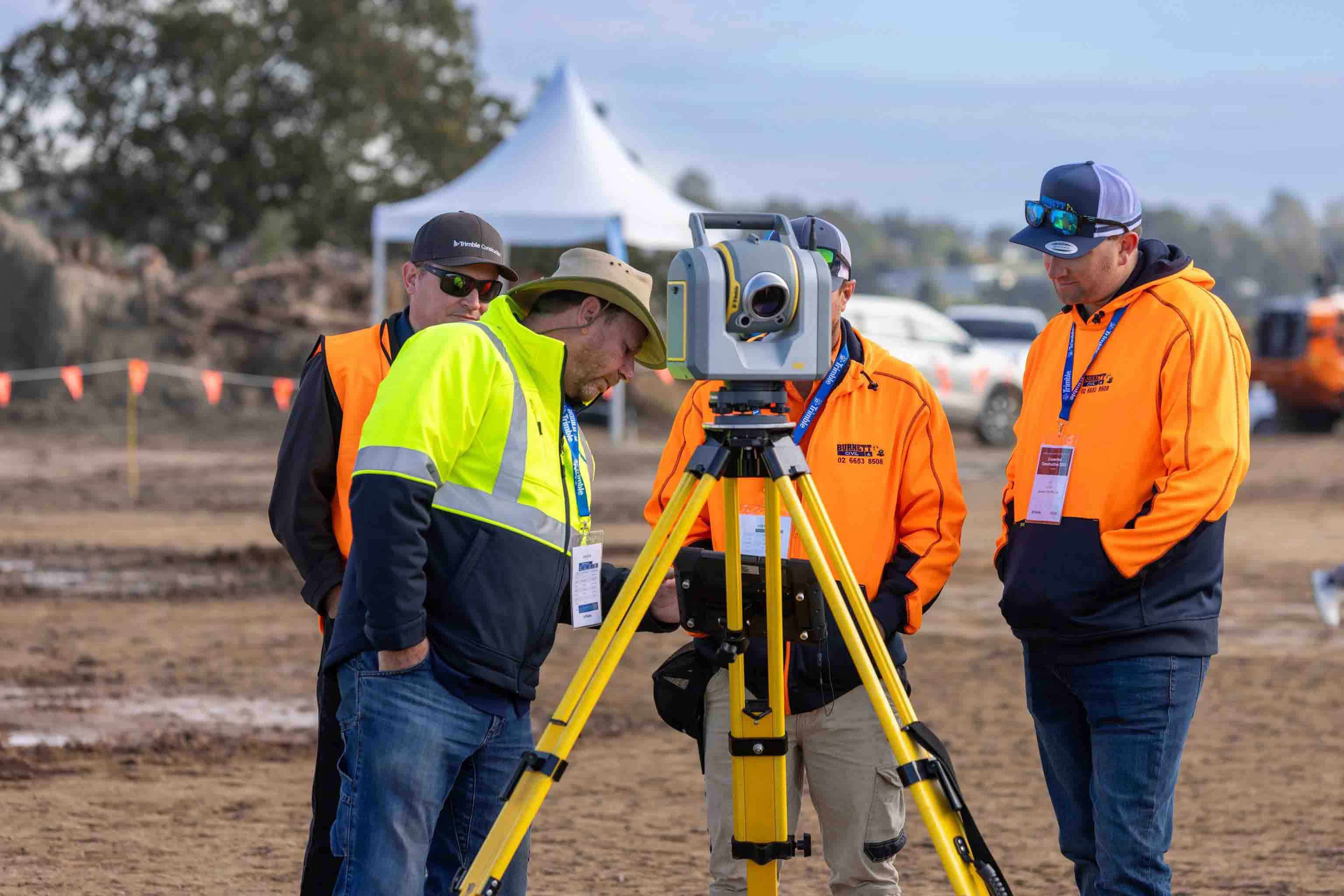



 Benefits
Benefits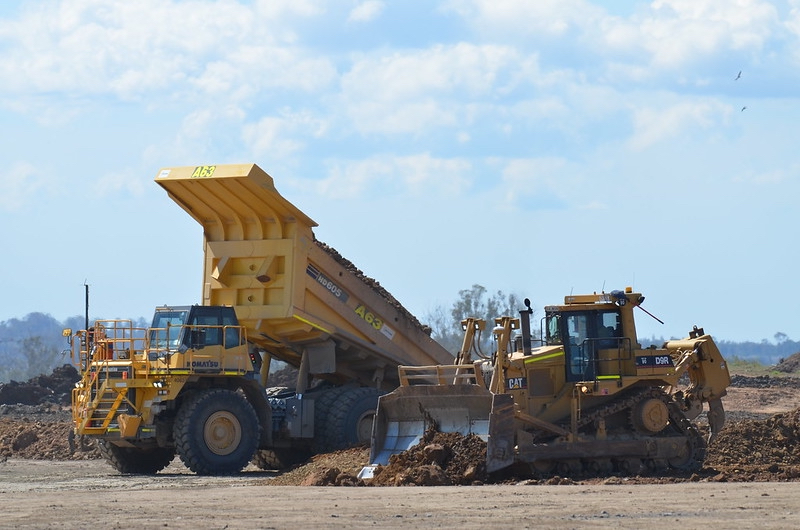 Daniel Ripley, ACCIONA’s Australia’s Central Region Survey Manager for Construction in Australia, said, “We needed to be able to send updated models to the field crews as multiple times a day—I didn’t think it was achievable, but our tech partners assured me it would work.”
Daniel Ripley, ACCIONA’s Australia’s Central Region Survey Manager for Construction in Australia, said, “We needed to be able to send updated models to the field crews as multiple times a day—I didn’t think it was achievable, but our tech partners assured me it would work.” The Specs: Trace, Test, Quantify
The Specs: Trace, Test, Quantify The Tech: Mobile Emphasis
The Tech: Mobile Emphasis Dynamic Delivery
Dynamic Delivery Stake-Free Empowerment
Stake-Free Empowerment